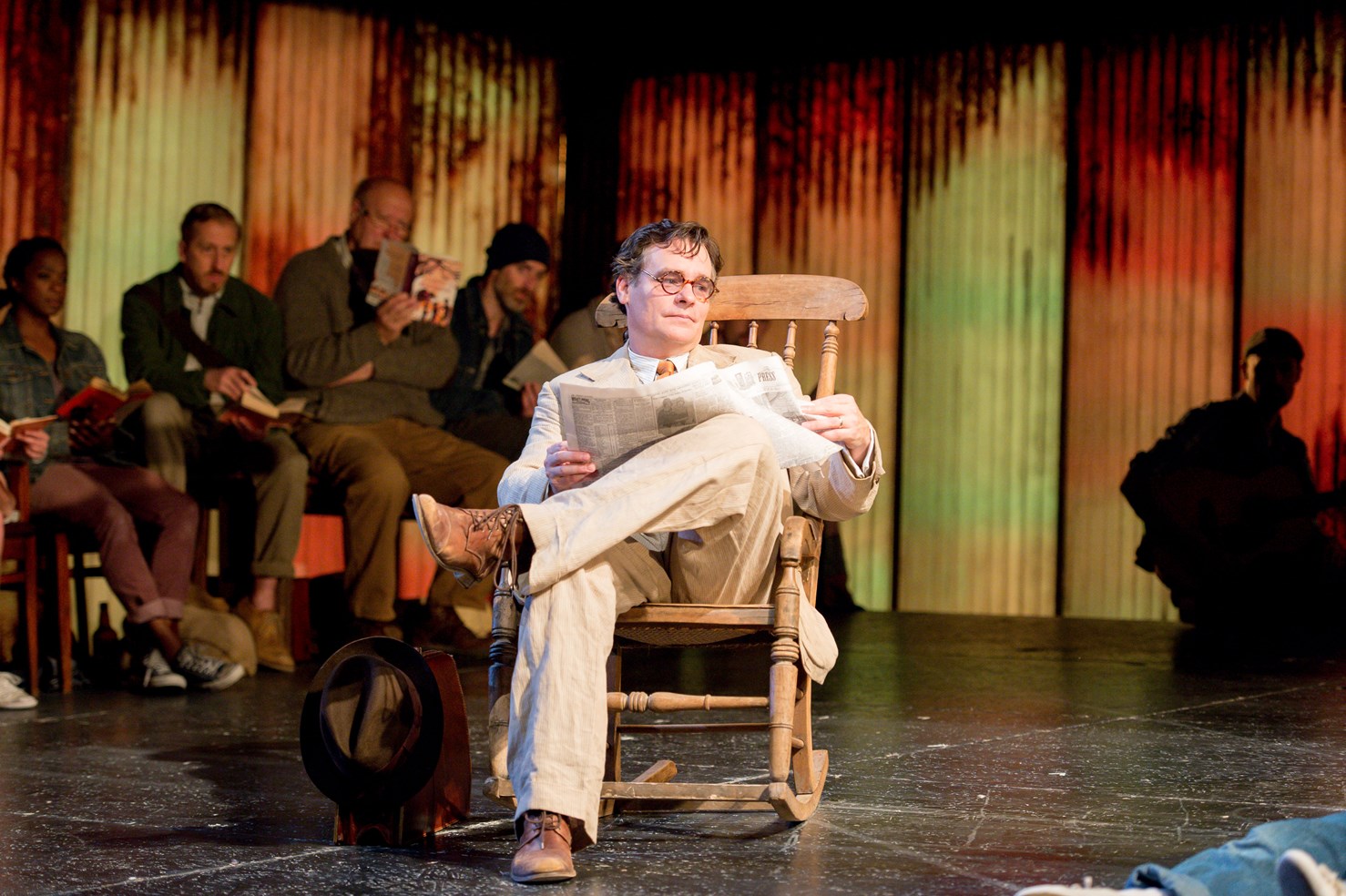
Which means that now, this award winning Christopher Sergel adaptation has finally left the UK following a series of sell out runs beginning back in 2013 at the Regent’s Park open air theatre.
For this production, many original cast members are intact. Primarily, there is the triumphant return of Hollywood star, Robert Sean Leonard, to the role of Atticus Finch – everyone’s favourite moral compass.
In perfect childlike simplicity, the Makeham town streets are drawn onto the stage like chalk on a board, completed with a single tree and tyre swing.
LOCAL ADVERTISING
Director Timothy Sheader brings the essence of story-telling to the fore. The cast slip in and out of performing the role of characters and narrators in perfect fluidity. When not forming the action, they sit on old wooden chairs either side of the chalked-out set, like residents of the streets; members of a Makeham community hall event; or, as we are, the wide-eyed spectators of a story brought to life.
To accompany the Southern drawl of the main characters, the various narrators bring a melting pot of regional UK accents to the table, again serving to suck the audience into the increasing notion that this is their bedtime story. Slowly, and very cleverly, the play; the narration; the audience, become one – a unity that Sergel was conscious to conjure. The steady lilting between the two modes draws the audience in, until you feel quite like you too are sat on the side of the stage on an old wooden chair, getting rocked along by the voices, the seamless movement between action, the lullaby-esque subtlety of Phil King’s musical score, and, above all, the lyricism of Lee’s prose.
While we’re on the subject, it’s worth mentioning that last week’s book launch for Go Set a Watchman at Waterstone’s Piccadilly naturally went down a storm. Events were kicked off by Sheader in discussion with authors Joanna Trollope and Paul McVeigh, and there were further literati studded throughout the evening’s attractions.
In symmetry to Sheader’s simple set, there was a single tree erected in the main foyer, this time adorned with hanging copies of Go Set a Watchman instead of Scout and Jem’s play swing. In each instance, the aim to capture the simple Alabama setting of both books and Lee’s colourful 1930s upbringing was successful in its effortlessness.
So, now’s the perfect time to ride the Harper Lee nostalgia train and revisit the moral lessons which loose none of their original, discerning punch. After all, you ‘have nothing to fear but fear itself.’


